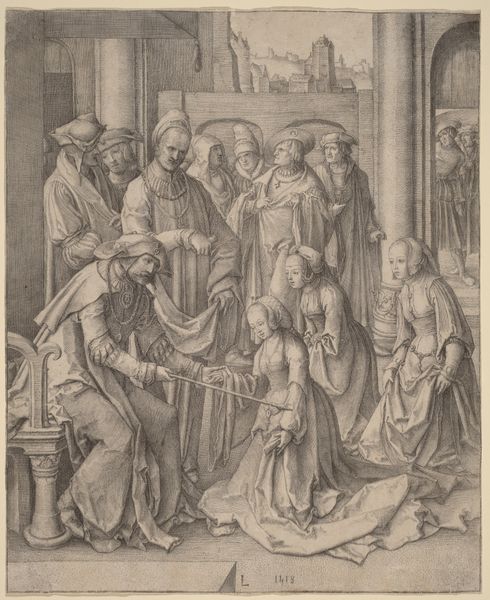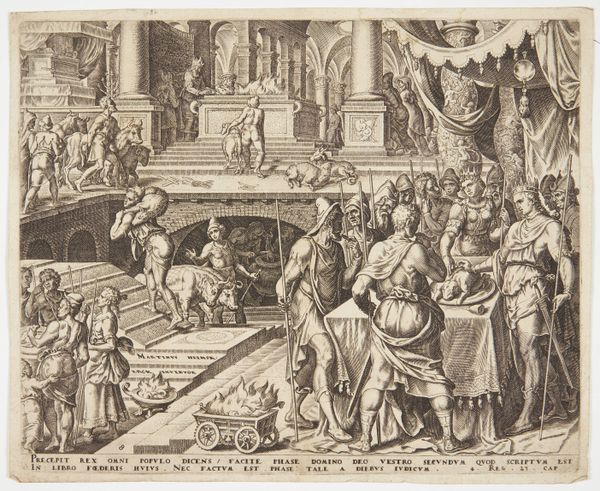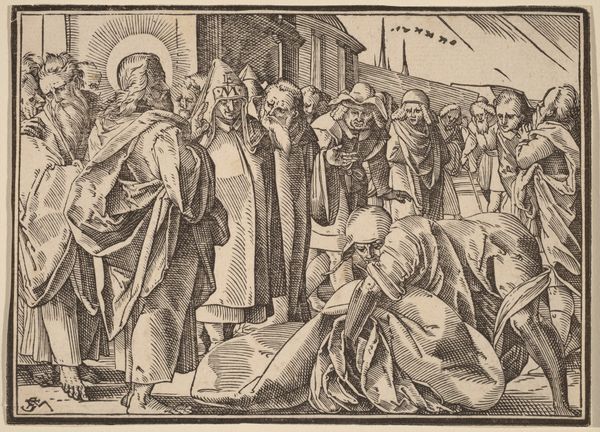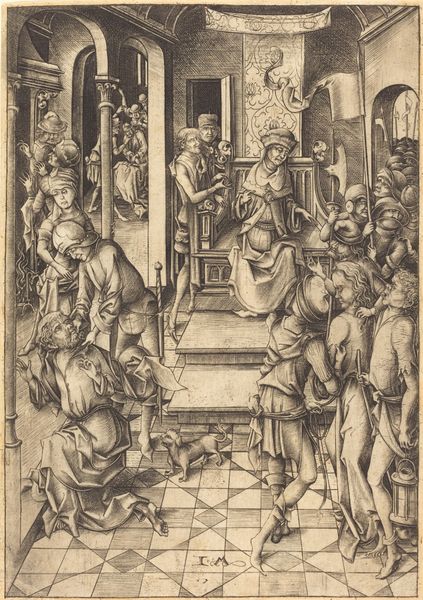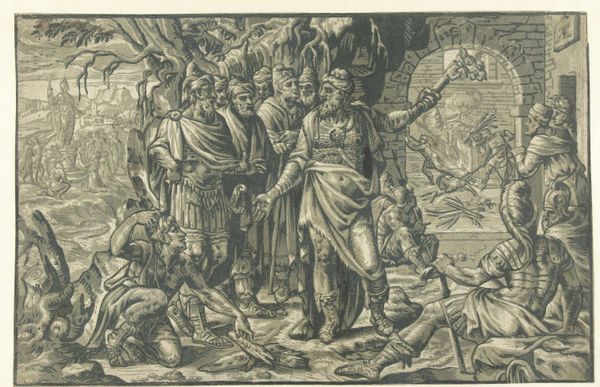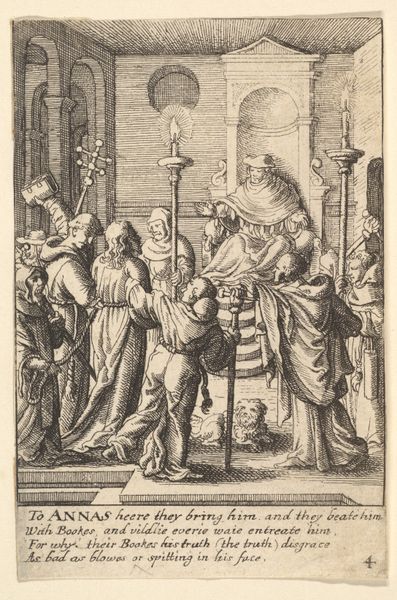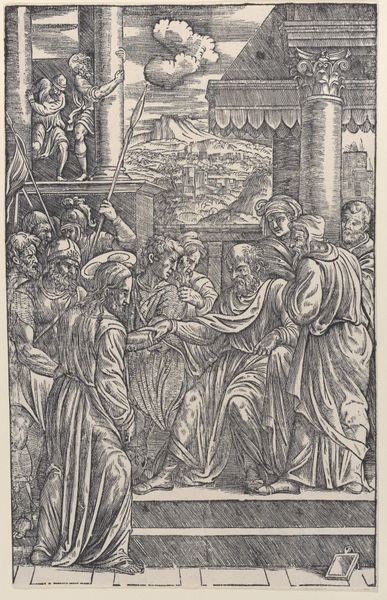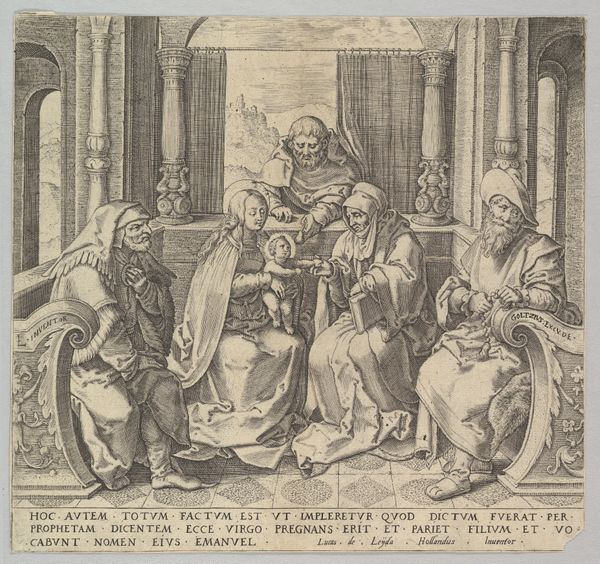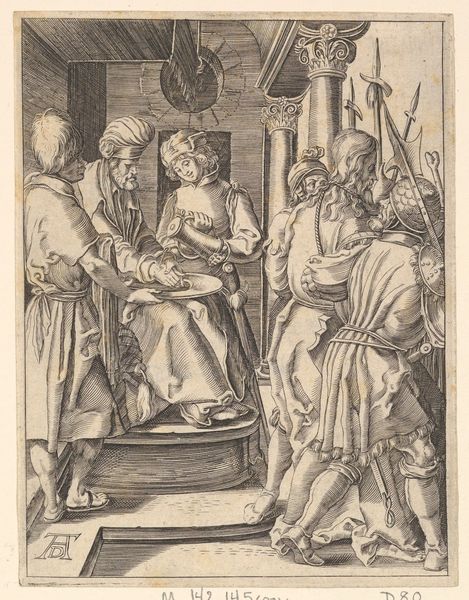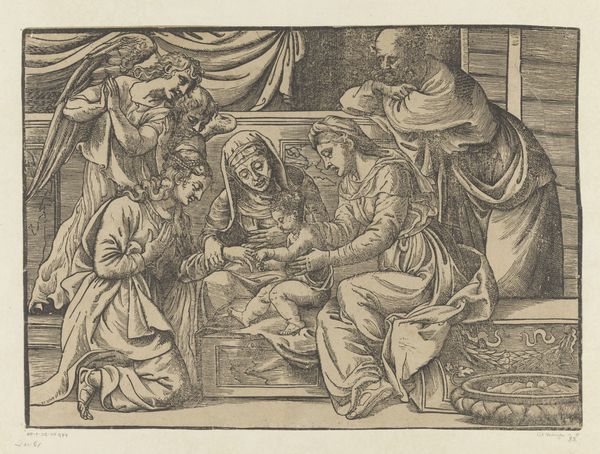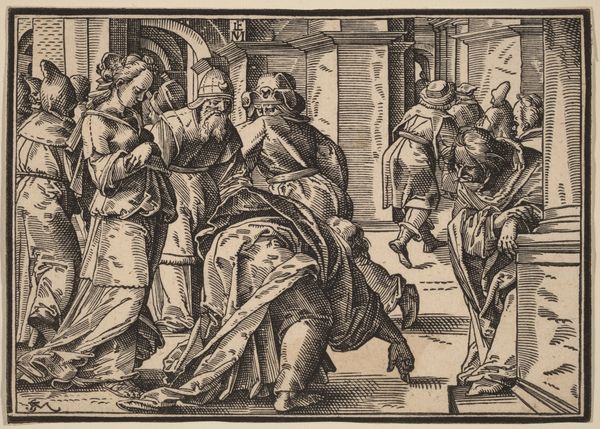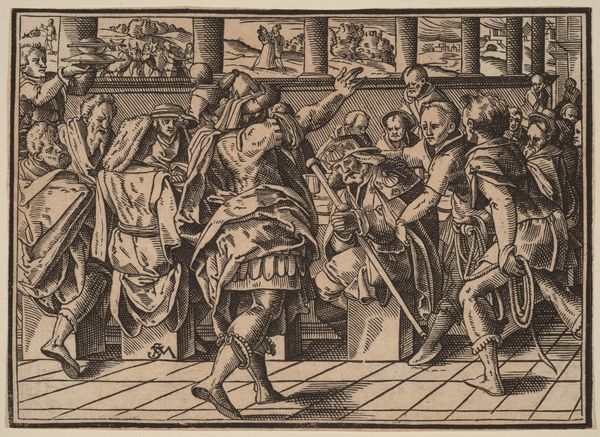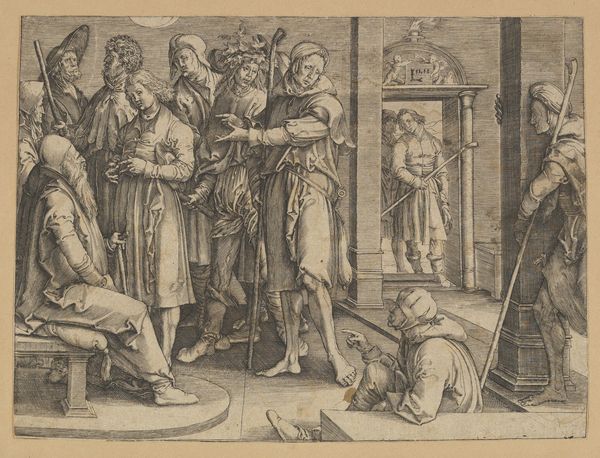
Christ Tells His Disciples of the Last Judgment Possibly 1630
0:00
0:00
drawing, print, engraving
#
drawing
#
pen drawing
# print
#
figuration
#
11_renaissance
#
history-painting
#
engraving
Dimensions: sheet: 10.7 x 14.7 cm (4 3/16 x 5 13/16 in.)
Copyright: National Gallery of Art: CC0 1.0
Editor: Here we have "Christ Tells His Disciples of the Last Judgment," an engraving by Christoph Murer, likely from around 1630. The detail achieved with simple lines is impressive. What's your take on this piece? Curator: This work is particularly compelling when we consider the materiality of printmaking in the Renaissance. Murer’s choice of engraving—the labor-intensive process of cutting lines into a metal plate to produce repeatable images—speaks volumes. Think about the socioeconomic factors at play. Editor: How so? Curator: Well, the very act of creating and distributing prints like this facilitated the spread of religious ideas to a wider audience, thereby challenging traditional hierarchies within the church. Consider also the economic investment required for materials such as the metal plate and the printing press, along with the skill needed to manipulate the burin. This wasn't just about artistic expression; it was a commercial and ideological undertaking. Editor: That's fascinating. I hadn’t considered the implications of mass production on religious authority. Was printmaking considered 'high art' at the time? Curator: That’s a key question! Materialist analysis encourages us to challenge the distinction between "high art" and "craft." While paintings might have been commissioned by the wealthy elite, prints offered a relatively affordable alternative. But this doesn’t diminish Murer's artistry. Instead, it forces us to reconsider art's role in society. The labor and consumption behind even seemingly simple works like this tells a complicated story about the relationship of religious stories with politics and economics. Editor: I’m starting to see that now. Focusing on the printmaking process really shifts the meaning for me. Curator: Exactly! It's about acknowledging the power of materials and means of production in shaping the cultural landscape. Editor: I'll never look at an engraving the same way again. Thank you.
Comments
No comments
Be the first to comment and join the conversation on the ultimate creative platform.

